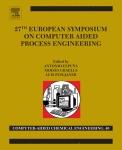 Authors: Petar Sabev VARBANOV¹, Jiří Jaromír KLEMES², Ferenc FRIEDLER²
Authors: Petar Sabev VARBANOV¹, Jiří Jaromír KLEMES², Ferenc FRIEDLER²
Affiliations: ¹Sustainable Process Integration Laboratory – SPIL, NETME Centre, FME, Brno University of Technology – VUT BRNO, Technická 2896/2, 616 69 Brno, Czech Rep and ²Centre for Process Systems Engineering & Sustainability, Pázmány Péter Catholic University, 1088 Budapest, Szentkirályi utca 28, Budapest, Hungary
Reference (APA): Varbanov, P. S., Klemeš, J. J., & Friedler, F. (2017). Challenges and Potentials of Modelling Tools Total Site Integration and Utility System Optimisation. In Computer Aided Chemical Engineering (Vol. 40, pp. 2545–2550). Elsevier B.V. https://doi.org/10.1016/B978-0-444-63965-3.50426-8
Abstract: “Industrial sites are served by a common utility system. There have been developments in the site-wide heat recovery and cogeneration optimisation, for which several prominent software packages have been used as computing tools. This contribution provides an overview of the developments and the software packages, mapping the feature requirements of the methods to the tools. The extensive methodology developments pose serious flexibility requirements that can only be partially supported by the existing tools. There is a need for more flexible modelling tools allowing of the whole spectrum of site energy optimisation tasks – ranging from concepts and algorithms development, to specific case studies, consulting and industrial implementations.”
Comments: the authors conclude by stating “Barna et al. (2015) presented an initial step this direction. Further development and extending its scope to the site level and linking it to the CAPE-OPEN standard (COLAN, 2017) can provide a robust basis for process optimisation and TSI. This would allow to reuse and customise tools and to build own in-house tools.“
